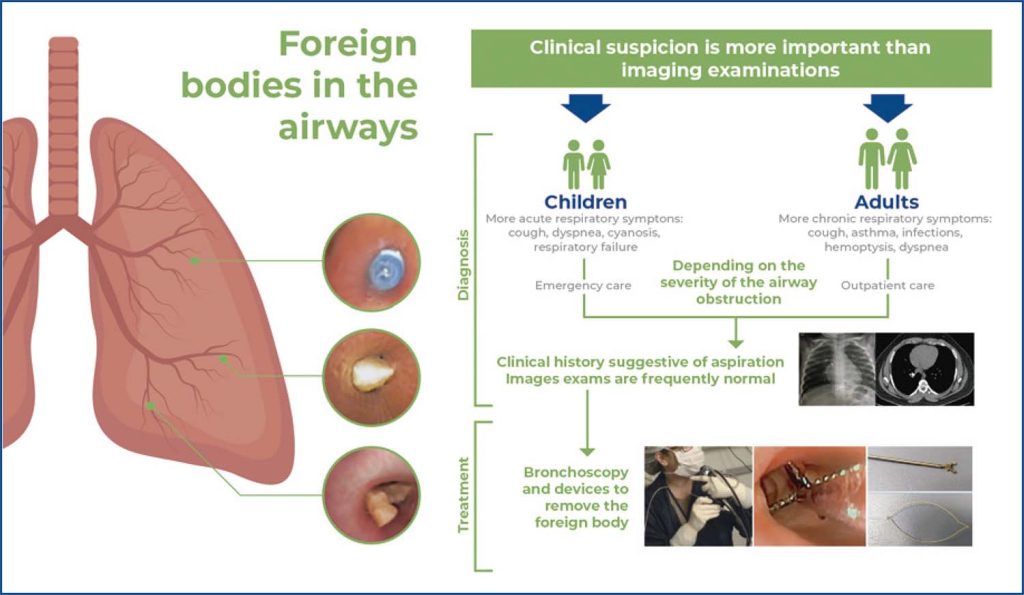einstein (São Paulo). 08/Dec/2023;21:eAO0391.
Analysis of 108 flexible bronchoscopies for the removal of foreign bodies from the airways
DOI: 10.31744/einstein_journal/2023AO0391
Highlights
Foreign body aspiration into the airways is common in adults and children, especially in the extremes of age.
Coughing, wheezing, and dyspnea may occur and can be life-threatening.
In airway foreign body, clinical suspicion is more important than imaging exams.
Bronchoscopy under general anesthesia is safe and effective for removing foreign bodies; it ensures timely relief and prevents further complications.
ABSTRACT
Objective:
To describe the clinical, bronchoscopic, diagnostic, and therapeutic aspects between children and adults.
Methods:
This retrospective study compared the clinical and bronchoscopic characteristics of adults and children who underwent bronchoscopy for suspected foreign body aspiration. Data on sex, outpatient or emergency origin, bronchoscopy results, characteristics of the aspirated foreign body, and complications were analyzed.
Results:
In total, 108 patients were included in the analysis, with foreign body aspiration diagnosed in 69% of patients (30 children and 44 adults). In 91% of patients, there was a clinical history suggestive of aspiration. The mean age of the adults was 65.89 (±19.75) years, and that of the children was 2.28 (±1.78) years. Most of the children were under 3 years of age (80%), while adults were mostly 70 years of age or older (54.5%). Emergency care was more common among children than adults. The most common foreign bodies found in both age groups were organic bodies, primarily seeds. The most frequent locations of foreign bodies were the lobar bronchi in adults and the main bronchi in children. Flexible bronchoscopy is the primary method for diagnosis and treatment. Transient hypoxemia occurred particularly frequently in children (5%).
Conclusion:
Foreign body aspiration, particularly that involving seeds, is more common in the extremes of age. A clinical history suggestive of aspiration is crucial in determining the need for bronchoscopy, which should be performed as early as possible. Flexible bronchoscopy is an effective and safe diagnostic technique.
[…]
95

